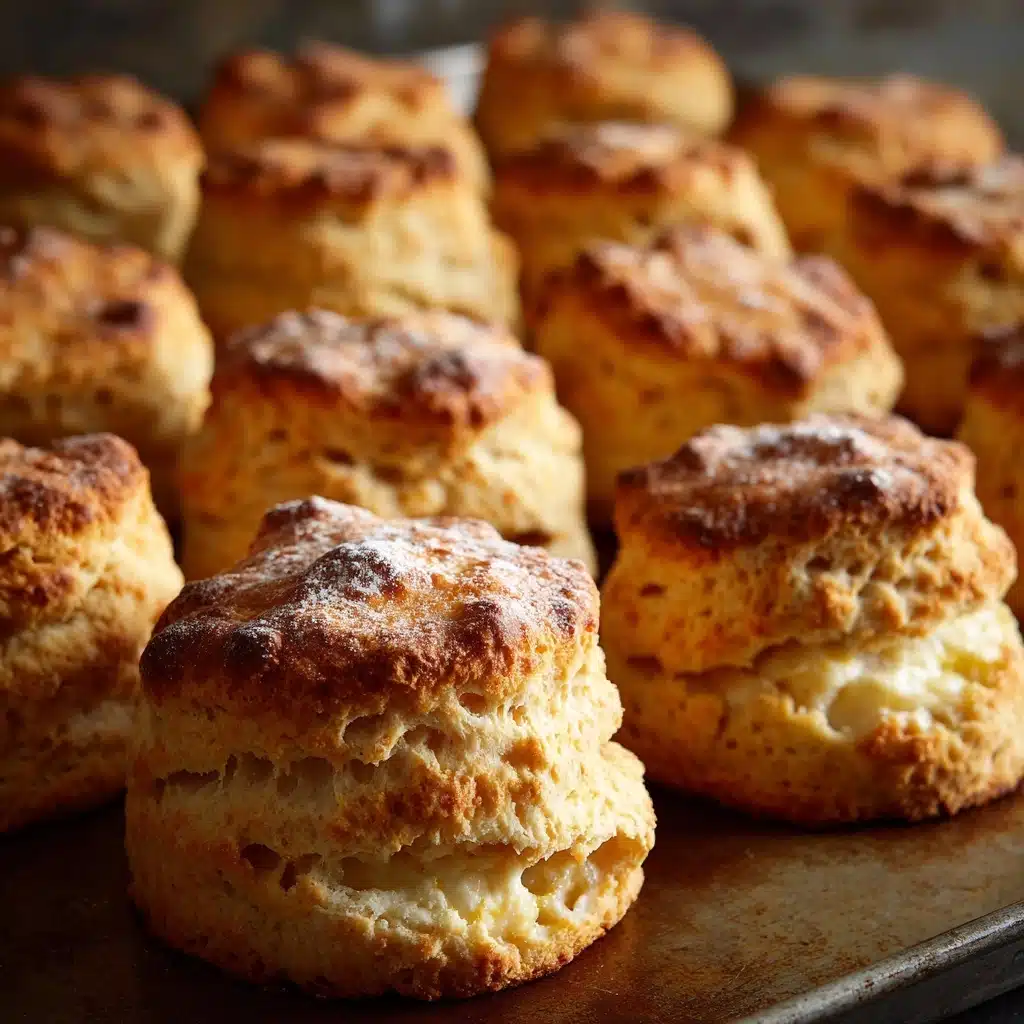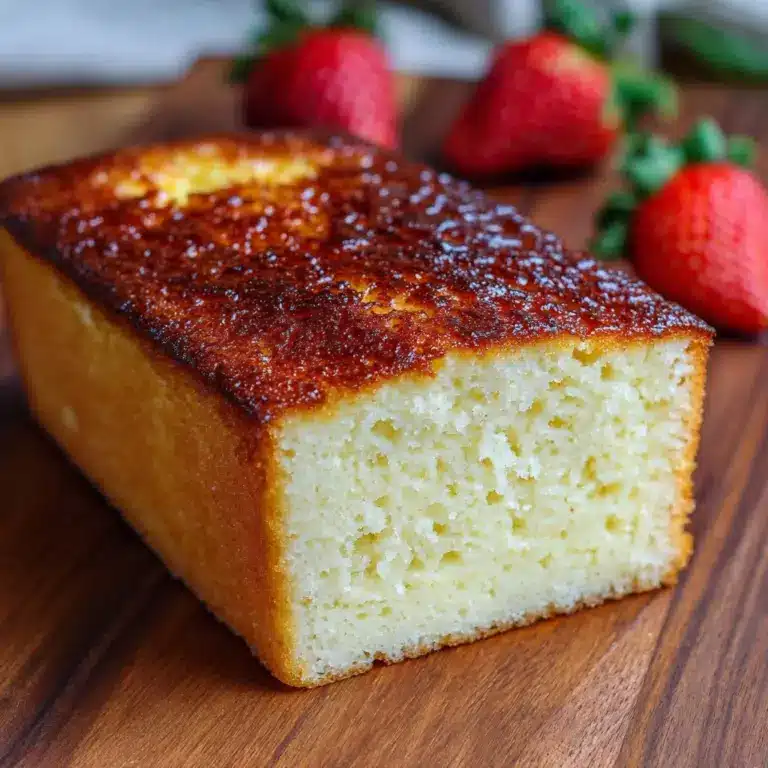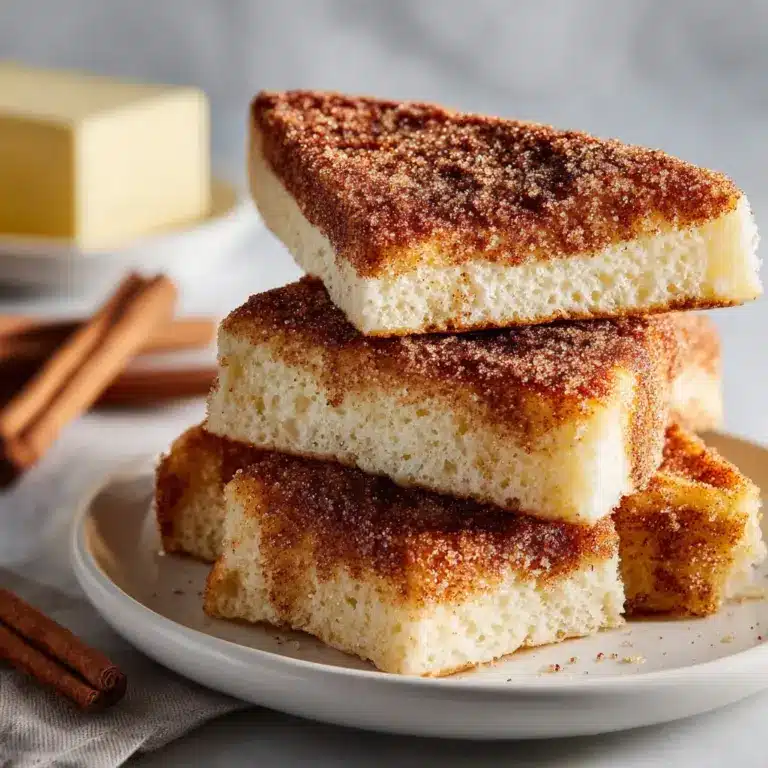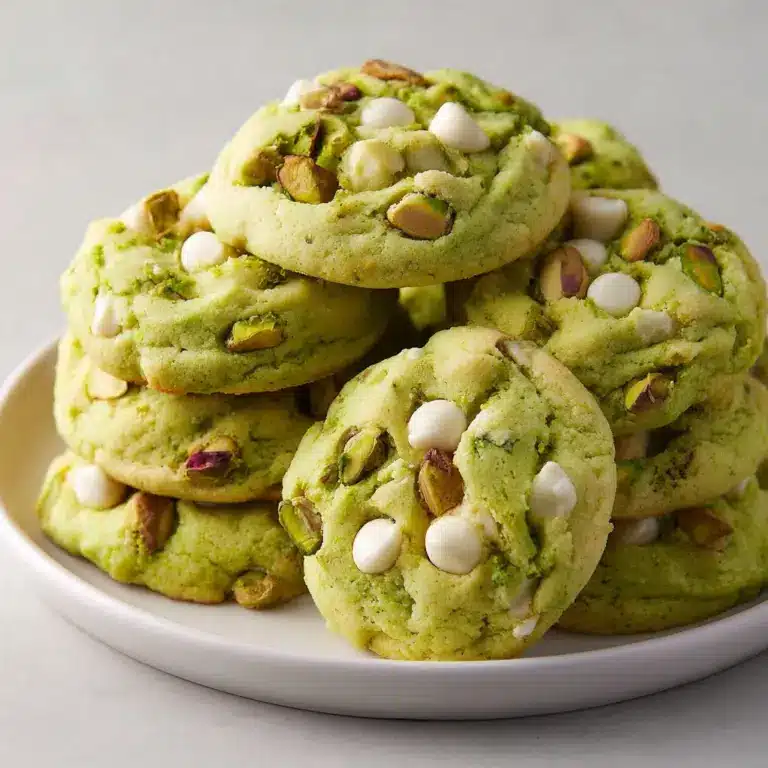English Scones Recipe
There’s something undeniably charming about a tray of freshly baked English Scones, their golden tops just begging for a spoonful of jam and a dollop of cream. These classic treats strike the perfect balance between fluffy and satisfying, making them as welcome at a bustling brunch as at a quiet afternoon tea. Simple ingredients transform into something special, and with just a bit of technique, you’ll find yourself with scones that rival any café’s offering. Once you’ve baked a batch, you may never look at store-bought versions the same way again!

Ingredients You’ll Need
The beauty of English Scones lies in their simplicity. Each ingredient plays a distinct role, contributing to the flavor, structure, and tender crumb scones are known for. Here’s what you’ll need—and why you shouldn’t skip a thing:
- Self-raising flour: Delivers that signature rise and fluffy texture, saving you the step of adding baking powder separately.
- Fine table salt: Just a pinch sharpens the flavors, making the scones anything but bland.
- Salted butter: Adds a layer of rich flavor and creates those delightful pockets of tenderness throughout.
- Milk: Brings the dough together and helps lend moisture, giving a soft, even crumb to your English Scones.
- Extra milk (for brushing): An extra brush on top ensures a golden, inviting finish that makes these scones irresistible.
How to Make English Scones
Step 1: Prepare Your Oven
Begin by heating your oven to 450°F (230ºC). This high temperature is essential—it ensures your English Scones puff up sky-high and develop a lovely crust on the outside while staying soft inside. While the oven heats, line a tray with baking paper so you’re ready to go.
Step 2: Measure and Sift
Give your flour a quick fluff with a spoon to lighten it before measuring. Spoon the flour into your measuring cup (rather than scooping), then level it off for accuracy. Sift your measured flour and the pinch of salt into a large bowl. Sifting not only blends the dry ingredients but also helps achieve that light, airy crumb scones are famous for.
Step 3: Rub in the Butter
Drop your cold, cubed salted butter into the flour and, using your fingertips, gently rub it in until the mixture resembles fine breadcrumbs. Don’t worry about working it all the way in—a few small pebbles of butter are actually a good sign. These will melt in the oven and create tiny pockets of flakiness throughout your English Scones.
Step 4: Mix in the Milk
Pour in 1 ¼ cups of milk and stir with a flat-bladed knife to bring the dough together. The dough should look and feel sticky—that’s the secret to ultra-tender scones. Depending on your flour or the humidity, you might need to add an extra spoonful or two of milk; better too sticky than too dry.
Step 5: Gently Knead and Shape
Turn your sticky dough out onto a lightly floured surface and knead it ever so gently for about 30 seconds (a quick, soft count is perfect). Pat it softly into a round that’s about 1⅓ inches (3cm) thick. Resist the urge to add more flour—sticky dough is what makes English Scones soft and pillowy!
Step 6: Cut Out and Arrange
Use a floured round cutter and press straight down through the dough (no twisting!). This ensures you get nice, even scones with a proud rise. Gather the trimmings and shape again if needed. Place each one snugly together on your lined baking tray—the close quarters help them rise even taller.
Step 7: Bake to Perfection
Brush the tops of the scones with a little extra milk to encourage that golden sheen, then pop them into the oven’s hottest section. Bake for 12 – 15 minutes, until the scones are risen and tinged with gold on top. Let the aroma fill your kitchen—it’s the reward for your patience.
Step 8: Wrap to Soften
As soon as your English Scones come out of the oven, wrap them in a clean tea towel. This simple trick traps steam and keeps the scones wonderfully soft and tender as they cool. Try to resist eating them all immediately—fresh from the oven is a magical moment!
How to Serve English Scones

Garnishes
Nothing elevates English Scones like classic toppings. A generous spoonful of clotted cream and a dollop of sweet berry jam make these scones undeniably decadent. Try lemon curd for a zingy twist or dust them with a gentle flurry of powdered sugar for an elegant finish.
Side Dishes
Pair your scones with a pot of robust black tea or fragrant Earl Grey for the ultimate experience. For a more indulgent spread, serve alongside finger sandwiches, fresh fruit, and mini tarts—instant afternoon tea, ready to impress guests or treat yourself.
Creative Ways to Present
Stack them high on a tiered cake stand for a party-worthy display, or wrap warm scones in a cloth-lined basket for a rustic, cozy feel. For special occasions, serve English Scones with miniature jars of jam and little spoons so everyone can create their perfect bite.
Make Ahead and Storage
Storing Leftovers
To keep English Scones at their freshest, let them cool completely before transferring to an airtight container. They’ll stay soft at room temperature for up to two days, but for the very best texture, enjoy them on the day they’re baked.
Freezing
English Scones freeze beautifully! Simply arrange cooled scones in a single layer in a freezer-safe bag or container. They’ll stay at their best for up to three months. When you’re ready to enjoy, just thaw at room temperature or warm briefly in the oven.
Reheating
To revive English Scones, place them in a low oven at 300°F (150ºC) for 5-8 minutes until just warmed through. Avoid microwaving if possible—it can make them chewy rather than soft. Enjoy them as if they were just out of the oven!
FAQs
Can I use all-purpose flour instead of self-raising flour?
Yes! Simply add 1.5 teaspoons of baking powder per cup of all-purpose flour to mimic self-raising flour. Your English Scones will still rise beautifully and have that signature lightness.
Why is my dough so sticky?
The dough for English Scones should be sticky! This is what gives them their soft, tender crumb. If it’s too sticky to handle, use lightly floured hands or a spatula, but resist adding extra flour unless absolutely necessary.
Can I add extras like fruit or cheese?
Absolutely! Fold in dried fruit, chocolate chips, or a handful of grated cheese after rubbing in the butter but before adding the milk. These extras add a wonderful twist to traditional English Scones.
How do I get tall, fluffy scones?
Don’t over-knead—just a brief, gentle knead is enough. And always press your cutter straight down through the dough without twisting, as this helps ensure an even rise on all sides.
What’s the secret to soft scones after baking?
Wrapping hot English Scones in a clean tea towel as soon as they come out of the oven traps steam and keeps them marvelously soft. It’s a classic baker’s tip that really works!
Final Thoughts
There’s nothing quite like the comfort and satisfaction of sharing warm English Scones, whether you’re gathered with friends or savoring a quiet cup of tea. If you’ve never baked them from scratch, I couldn’t encourage you more—get your flour, butter and milk ready, and prepare for a timeless treat that’s sure to become a favorite in your kitchen too.
PrintEnglish Scones Recipe
Learn how to make classic English Scones with this easy and delicious recipe. These scones are perfect for a traditional afternoon tea or a sweet breakfast treat.
- Prep Time: 15 minutes
- Cook Time: 15 minutes
- Total Time: 30 minutes
- Yield: 12 scones 1x
- Category: Baking
- Method: Baking
- Cuisine: English
- Diet: Vegetarian
Ingredients
Dry Ingredients:
- 3 cups self-raising flour
- Pinch of fine table salt
Wet Ingredients:
- 2 ounces (60g) salted butter
- 1 ¼ cups milk, plus extra for brushing
Instructions
- Preheat the Oven: Heat the oven to 450°F/230ºC.
- Prepare the Dough: Sift flour and salt into a bowl, then rub in the butter until the mixture resembles fine breadcrumbs. Add milk and mix until sticky.
- Knead the Dough: Turn out onto a floured board, knead briefly, then pat into a round. Cut with a floured cutter.
- Bake: Place on a lined tray and bake in the preheated oven for 12-15 minutes.
- Rest: Remove from the oven and wrap in a towel to keep soft.
Notes
- Ensure not to over-knead the dough to keep the scones light and fluffy.
- For best results, serve warm with clotted cream and jam.
Nutrition
- Serving Size: 1 scone
- Calories: 180
- Sugar: 3g
- Sodium: 220mg
- Fat: 6g
- Saturated Fat: 3.5g
- Unsaturated Fat: 2.5g
- Trans Fat: 0g
- Carbohydrates: 27g
- Fiber: 1g
- Protein: 4g
- Cholesterol: 15mg
Keywords: English scones, scone recipe, traditional scones








